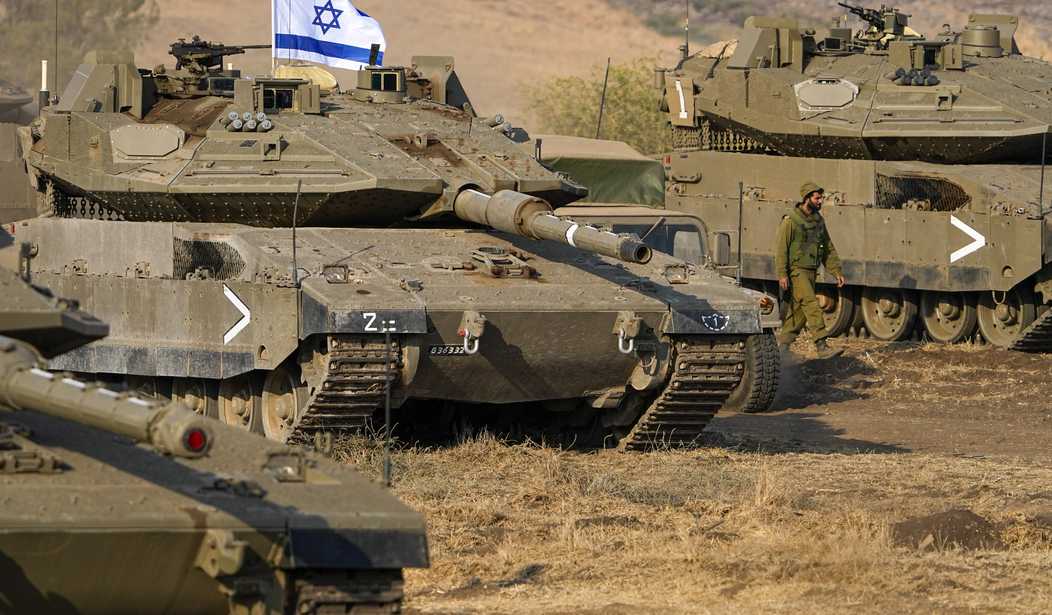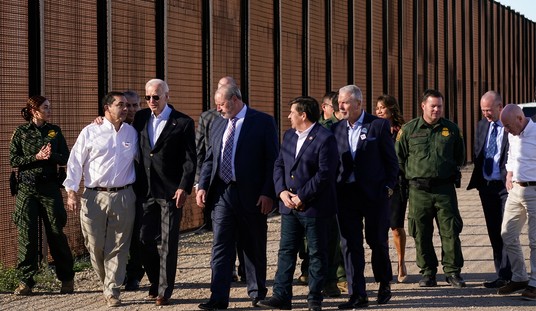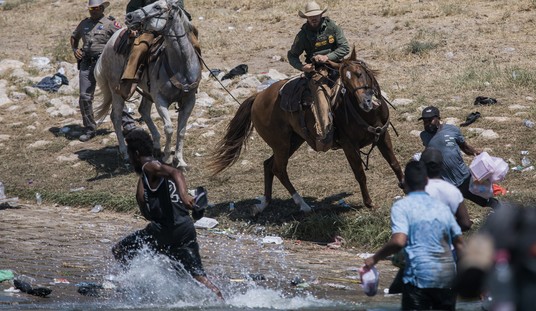Has the ground war actually started in Gaza? The Israelis have not yet declared that, but have said instead that last night kicked off a “new phase” of its war against Hamas and Gaza. Unlike previous overnight incursions into Gaza by armored and infantry units, IDF forces have not retreated back to Israel but remain on the ground, engaging Hamas and especially targeting the tunnels:
Israeli troops were “still in the field” this morning after the Israel Defense Forces started ramping up its “ground operations” in Gaza last night, IDF spokesperson Daniel Hagari said in a briefing earlier today.
This appears to be the first time since Israel launched its response to Hamas’ Oct. 7 attack that the IDF acknowledged troops were still “in the field” following an incursion into Gaza. Hagari said forces there were “continuing with the war.”
As I suggested yesterday, the Israelis have chosen to proceed carefully with its ground forces. Rather than rush into Gaza in a massive invasion, the IDF has chosen to pick its way through the deathtraps set by Hamas and Palestinian Islamic Jihad. That holds some risks, especially if forces don’t take care to keep from getting too separated and allow Hamas terrorists to flank them or pop up behind from the tunnel system designed to provide exactly that opportunity.
The “new phase” may be an intermediate position to deal with those potentialities. If previous missions were “recon in force,” this appears to be less recon and more operational. The IDF claimed to have hit 150 Hamas tunnels and bunkers from the air and ground overnight as targeted strikes increased dramatically. The limited ground incursions likely intend to support the results of those attacks and ensure that the future attack lanes are cleared of those dangers.
The pace of those strikes usually slacks off in the daylight, but the “new phase” now means a constant attack:
Israeli warplanes pounded northern Gaza overnight Friday and on into Saturday, hitting more than 150 underground tunnels and bunkers of the Hamas terror group as tanks and other forces pushed into the Strip in a limited but protracted incursion, the military said.
Defense Minister Yoav Gallant said Saturday afternoon that the war had “entered a new phase,” underlining the stepped-up ground force activity inside Gaza.
Overnight, he said, “the ground shook in Gaza. We attacked above ground and below ground, attacking terrorists of all ranks, in all places.” The war would continue “until further notice,” he added.
That sounds like a high number, but 150 tunnels and bunkers probably only puts a small dent in Hamas’ northern Gaza infrastructure. The missiles still flying at Tel Aviv and other parts of Israel remind the IDF that both Hamas and PIJ still have enough infrastructure to maintain an offensive against Israel, at least in terms of artillery. The IDF is still a long ways out from knocking out that capability.
However, they may be making progress in another way. The IDF claimed to have killed two key Hamas commanders overnight, including the terrorists in charge of aerial and naval phases of their October 7 slaughter:
Overnight, Israel also took out several senior Hamas terrorists, including the head of the aerial array and the naval force of the Gaza Brigade. Both terrorists played strategic roles in the planning of the October 7 Hamas massacre that killed more than 1,400 Israelis.
Hagari said that their assassinations represented significant progress toward Israel achieving its goal of dismantling Hamas and would make it easier for the ground troops to do their job.
“Eliminating them facilitates the war’s progress and enables the forces on the ground to fight against a weaker enemy,” he said.
Let’s get back to what the ground operations tell us so far. Other than the continuing bombardment of missiles, Hamas has not mounted an offensive, or even a noticeable defense in force, against the IDF incursions into Gaza. Their strategy had been based on a return to previous doctrine in IDF invasions, which meant getting the Israelis to charge into Gaza and then use guerrilla tactics, urban warfare, and the tunnel system to chew the IDF into pieces and force them to withdraw. So far, Israel has not taken the bait, and Yonah Jeremy Bob sees a new IDF doctrine unfolding — guerrilla warfare, IDF style:
By making targeted incursions and regularly changing the spots where the incursions take place, the IDF is keeping Hamas on edge.
Put simply, Gaza’s terror rulers do not know where the IDF may jump out from next.
This is designed to make Hamas antsy to the point that it negatively impacts morale, to have it start second-guessing its defensive posture, enable the IDF drone and other surveillance platforms to observe Hamas movements adjusting that posture (which helps reveal some of its hiding places), and to get Hamas to prematurely activate boobytraps and ambushes without being able to maximize their impact on larger groups of IDF troops.
These guerilla warfare tactics, which are essentially the IDF’s own version of “hit and run” can also flip Hamas’ pre-October 7 game of luring Israel into complacency on its head.
Earlier this week, I suggested that the shorter-term incursions (recon in force) may have been intended as feints to accomplish exactly what Bob posits here. That may also explain how the IDF has been able to target both the tunnel/bunker system more effectively, as well as their success in targeting Hamas’ senior command structure. Bob sees the next step coming soon:
If the IDF applies the tactic properly, it will start making multiple targeted short incursions at the same time with a high enough frequency that Hamas will become more and more confused about what will happen next, about when an incursion might be larger, from where it will come – and then strike at that moment when Hamas’ guard has suddenly gone down.
This will enable the IDF to get an initial foothold in Gaza with larger troops before Hamas can fully adjust and mount a counter-offensive.
Put more simply: the IDF will play the Whack-a-Mole game better than Hamas, and Hamas will get whacked with far superior fighting power when they do.
Bob notes that this won’t eliminate the need for a traditional and massive ground incursion; at some point, Israel will have to occupy ground to meet its overall strategic objective of destroying Hamas. There is no way around that, and the IDF will take significant casualties when that occurs. But the IDF clearly understands that Hamas has turned that ground into a deathtrap and have evolved their Gaza doctrines to deal with that, and it’s not at all clear that Hamas has the strategic or tactical skill to adapt to the IDF’s innovations on the fly. And if the IDF keeps succeeding in targeting Hamas’ senior leadership, their skill level will degrade to the point where adaptation cannot be achieved on a scale large enough to matter.







Join the conversation as a VIP Member